Paying the Price – Canada-Wide Costs of Climate Change
Climate change leads to costs and benefits arising from impacts of gradual changes in temperature, precipitation, and sea levels, as well as from changing patterns of extreme weather and climate events. Could we see economic benefits? How is Canada affected? What will climate change cost Canada?
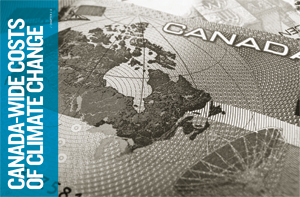
Many global and country-specific studies assessing climate change impacts and adaptation have been undertaken since the early 1990s, including detailed scientific assessments conducted by the Government of Canada, but economic evidence for Canada is limited. No national-level analysis of this kind has been published until now. Yet, the need for such information is growing. Canada has already warmed more than the global average with warming to date estimated at over 1°C. Physical impacts of warmer temperatures and shifts in precipitation in our country are increasingly well documented, from shrinking polar sea ice to drier conditions in the Prairies and interior of British Columbia. Canada’s own geography and hemispheric location are key determinants of just how much we will be impacted.
The NRTEE analysis suggests that climate change will hit us economically. In a changing climate, temperatures will rise more quickly in polar regions so, on average, we will experience more warming than most countries. We are currently well adapted to cold temperatures: our houses are well insulated and in some parts of the country we have built homes and infrastructure on permafrost. Prairie farmers are accustomed to variability in moisture levels from one growing season to the next, but recent research suggests the potential for more severe and frequent drought and unusually wet years, with implications for future yields. The costs we could incur from climate change are the costs of continuously adjusting to changing conditions. Although harder to calculate and less immediately apparent, they are real and significant and bear understanding.
Climate Impact Scenarios
The NRTEE adopted a consistent, comparable scenario approach throughout our analysis and in this report. Instead of estimating the costs of climate change for only one possible future, we applied scenarios representing four possible futures to our analysis to highlight uncertainty and illustrate a range of future economic outcomes. These scenarios combine two key drivers of change: (1) extent of climate change resulting from global GHG emissions and (2) national rate of population and economic growth in Canada.
Extent of climate change
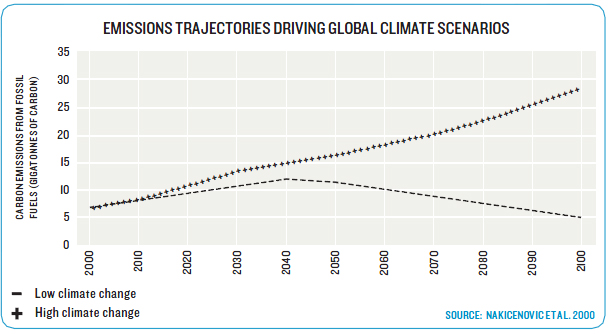
Rate of population and economic growth in Canada
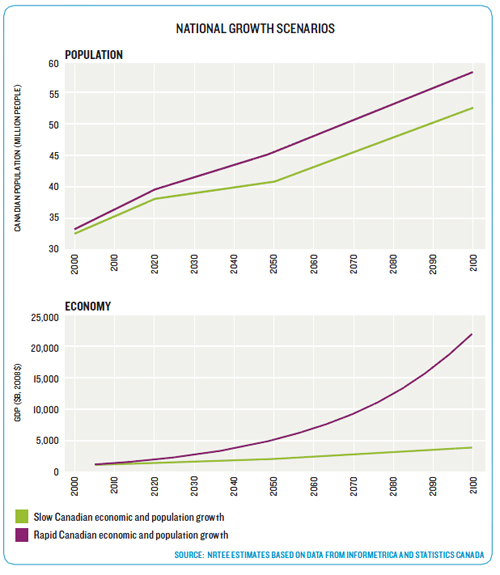
When these growth scenarios are overlaid on the climate scenarios, we have four possible futures.
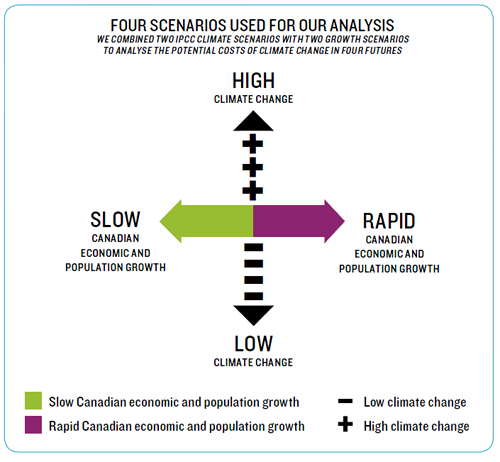
Economic Consequences of Climate Change for Canada
(1) In all scenarios, climate change is expected to impose accelerating costs, rising from an average value of $5 billion per year in 2020 to an average value of between $21 billion and $43 billion per year by 2050.
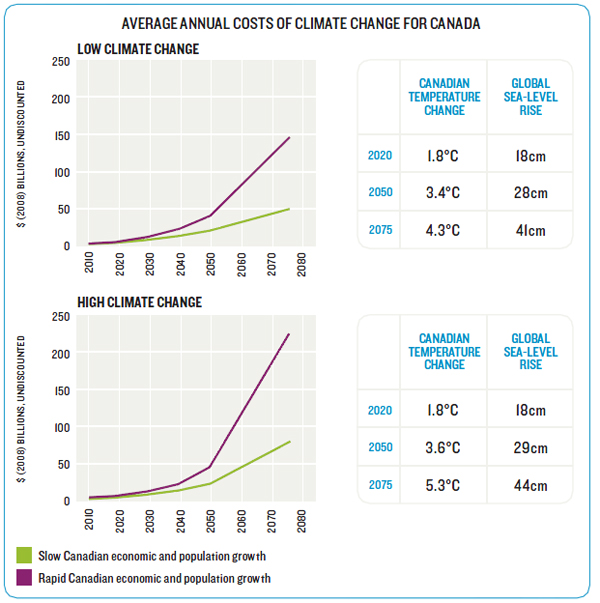
(2) Climate change presents a growing, long-term economic burden for Canada.
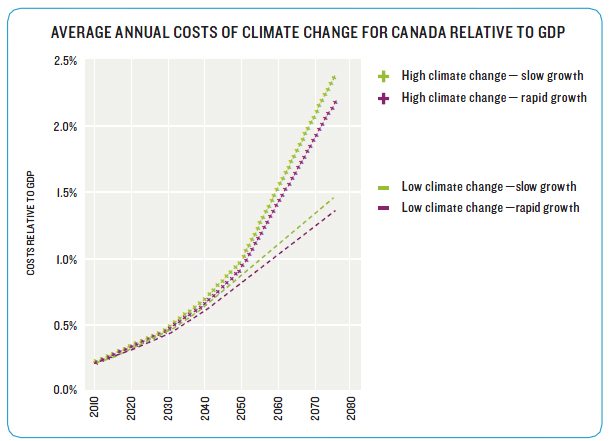
(3) Uncertainty about the science and economics of climate change suggests that a wide range of outcomes is possible.
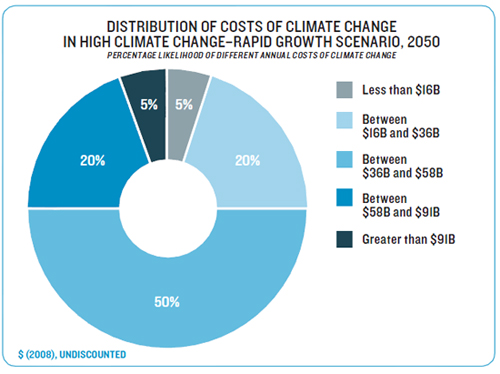
(4) The costs could be far higher than the average.
(5) A lower emissions future would remove the possibility of very costly outcomes that would be possible in a high emissions future.
These findings show that lower global emissions levels would greatly reduce the costs of climate change in absolute and relative terms or put another way, they show that higher global emission levels mean correspondingly greater economic costs. They also show that lower global emissions levels reduce the risks of extremely high costs of climate change. By implication, worldwide efforts, including ours, to rein in and cut emissions can be seen as an insurance strategy to reduce these risks.
























